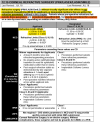exNavyOffRec
Well-Known Member
Not to be pedantic, just to be clear: if you were within the limits, it wasn't a "waiver," right? The waiver is for people outside of the limits. It was just some kind of declaration/documentation?
Correct. As long as you fall in the limits, you do not need a waiver.
Plenty of people decide to get PRK/LASIK (which does warrant a very easy waiver) despite being in the limits bc they are close and fear eventually falling outside, they don’t want to wear corrective lenses in the plane or they just want better eyesight…..
If you had LASIK/PRK, you will need a waiver.
Waivers aren't a bad thing.
Bring ALL the paperwork related to the surgery when you go to your fight physical and docs will handle it from there.
The waiver thing for LASIK or PRK is from the past, it is no longer needed but all documents need to be submitted to ensure vision is stable and the person met pre surgery requirements.I needed a waiver and my eyes were -2.75 no astigmatism. On my PQ letter it just says history of LASIK ….
(3) All forms of corneal surgery are
disqualifying except for PRK, LASEK, and LASIK.
Waivers are not required for members who have had
successful surgery if stable postoperative vision meets
the criteria of MANMED article 15-106 paragraph
(4)(d)(1) of this article and the following are met:

